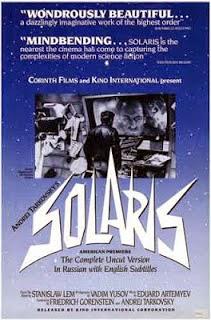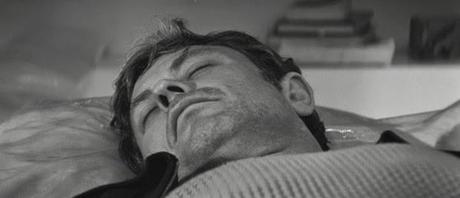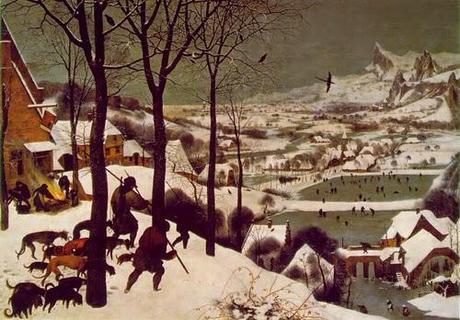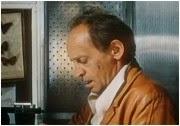 Many have seen this cinematic masterpiece. Many have
considered it as a major achievement in science fiction cinema. The director himself
did not consider this work to be perfect because of the interference of the
Russian state machinery at various stages of the film’s production, limiting his
artistic freedom, to which Tarkovsky had to finally succumb, to ensure that the
film could be released in Russia and elsewhere in Eastern Europe. Though eventually
released in limited public theatres, the film slowly gained in reputation as a
cult film and did very well in the box office. It won the Cannes film
festival’s Grand Prize of the Jury and the FIPRESCI prize in 1972. Elsewhere,
the film befuddled audiences who felt cheated of their ticket cost, just as the
few disgruntled filmgoers who tore up the seats of the Archana theater in New
Delhi during the screening the Tarkovsky retrospective as part of the Indian
International Film Festival in 1979, possibly after reading this critic’s naive
but honest 1979 recommendation of the film as the best film of the 2-week mega event.
Even today, this cinematic work remains among the top 10 movies of all time for
this critic. An extensive analysis follows.
Many have seen this cinematic masterpiece. Many have
considered it as a major achievement in science fiction cinema. The director himself
did not consider this work to be perfect because of the interference of the
Russian state machinery at various stages of the film’s production, limiting his
artistic freedom, to which Tarkovsky had to finally succumb, to ensure that the
film could be released in Russia and elsewhere in Eastern Europe. Though eventually
released in limited public theatres, the film slowly gained in reputation as a
cult film and did very well in the box office. It won the Cannes film
festival’s Grand Prize of the Jury and the FIPRESCI prize in 1972. Elsewhere,
the film befuddled audiences who felt cheated of their ticket cost, just as the
few disgruntled filmgoers who tore up the seats of the Archana theater in New
Delhi during the screening the Tarkovsky retrospective as part of the Indian
International Film Festival in 1979, possibly after reading this critic’s naive
but honest 1979 recommendation of the film as the best film of the 2-week mega event.
Even today, this cinematic work remains among the top 10 movies of all time for
this critic. An extensive analysis follows.
Kris carries Hari version 2: "Whenever we show pity, we empty our souls"
The book vs. the movie: For readers of global science fiction, Polish novelist Stainslaw Lem is a giant among a host of pygmies. Lem (1921-2006) had predicted concepts such as virtual reality and nanotechnology, in his works written more than 60 years ago, terms that are gaining in currency today. He is indeed a later day Jules Verne. His works have been made into several remarkable movies by varied directors across the world over the decades—each work philosophical and stimulating to the mind. One is a Dutch film by Piet Honderdos called Victim of the Brain (1988). The Israeli director Ari Folman made the animated film The Congress (2013), which won some awards. The Hungarian director Pater Sparrow chose to film 1 (2009) based on another Lem tale. An East German filmmaker Kurt Maetzig made an interesting film First Spaceship on Venus (1960). Then comes a Russian TV film of Solaris made in 1968, then Tarkovsky’s Solaris in 1979, followed finally by Steven Soderberg’s comparatively simplistic adaptation of the novel in 2002.
Now Tarkovsky was able to consult with Lem as he worked on his film--a major advantage for any director attempting to adapt a work of Lem on screen. Typical of the director, Tarkovsky decided to infuse his own ideas into the basic structure of the novel infuriating Lem for whom two aspects of Tarkovsky’s work were unacceptable—the first being the three overbearing love elements---the uxorial love of Hari (Khari), and the love of Kris for his dead mother, and ultimately the love of Kris for his living father and the second being the obvious theological references in Tarkovsky’s film (the mention and comparison of Protestant theologian Martin Luther’s famous act of throwing the inkwell at the devil’s appearance, at the Biblical Russian artworks complete with halos in Kris’ room on the space station shown at critical points in the film, two separate references to the literary character Faust’s theological tryst with immortality, Kris’ observation to Dr Snaut that “whenever we show pity we empty our souls” and the use of Bach’s Chorale Prelude in F minor on the soundtrack) since Lem was an atheist, though of Jewish origin. Tarkovsky was doing what Terrence Malick did to the James Jones’ award-winning novel of The Thin Red Line, when he adapted that literary work making the cinematic work considerably personal and different from the Jones’ novel.

Donatas Banionis as Dr Kris Kelvin: "Sleep is the equalizer
between the shepherd and the king, the simple and the wise./
Cervantes' Don Quixote"
For Tarkovsky, his family mattered most. All his films accentuate this fact. Women in his life (most importantly his mother and, to a lesser extent, his first wife) are eternally elements that he recalls with love, reverence and gratitude. (Interestingly it is a parallel case with Malick, as well, especially in The Tree of Life.) It is, therefore, not surprising that the image of his mother smoking her cigarette (often captured with her back towards the camera) is a signature shot of Tarkovsky, which he perfected in Mirror, eventually made 3 years after he made Solaris. In Solaris, the mother and the cigarette are first introduced in the film within the film, which Kris states was shot by himself and his father. Kris’ foster mother Anna, who evidently loves Kris, is moved to tears when Kris states that he will be taking that home film on his space journey from which he might not return. Soon after the viewer of Solaris is shown the film within the film, the viewer is shown the virtual Hari version 2 (wife of Kris) smoking a cigarette, in the same posture as Tarkovsky’s mother smoked her cigarette in the opening sequence of the autobiographical Mirror. Now Lem and any logical viewer of Solaris could wonder how and where cigarettes got introduced into the scenario when only Dr Snaut was the only human on the space station, orbiting the planet Solaris, who was a smoker. And that too, a virtual Hari smoking!! Did the real Hari smoke? There is no evidence of that either. (Of course, we know from Mirror that Tarkovsky’s mother also smoked.) Evidently Tarkovsky’s mind was playing with the images of his mother and importing those to merge with those of the virtual Hari version 2. This is clarified by the director in the dream sequence towards the end of the film where images of his dead mother and the virtual/dead Hari switch more than once. Finally, there is Kris’ father in front of whom Kris kneels at the end of the film reprising the kneeling posture in front of the near human virtual Hari at the birthday party of Dr Snaut.

The dog appears on Solaris, as Kris kneels before his father
Lem’s book dealt with the futuristic problem of inter-species communication and the philosophical implications it introduced for us by recalling our past life on Earth and our conscience chiding us for our past guilty actions. This is apparently why some eighty odd original crew members on the space station died leaving only two of the smartest still alive on board, when Dr Kris Kelvin is sent to join them by the scientists on earth to investigate the situation and decide either to call off the Solaris mission after accepting it as a failure or attack the Solaris ocean with high intensity rays from the station. Instead Tarkovsky lunges backwards to explore intensely personal memories and guilt of one individual, Kris, beyond the Lem novel and the Soderberg version, both dealing more with the condition of Dr Snaut (renamed Dr Snow in the Soderberg film-version) than with the evolving condition of Kris. Thus while Lem urges his readers to look outwards to communicate with an unknown species and the problems associated with it, Tarkovsky urges his viewers to look inwards—that too with a covert purpose of being critical of the political climate of USSR in 1972, while espousing Tarkovsky’s personal undeniable love for his country, its arts, its cultural history, and its literary masters. Viewers will note that the script weaves in comments about Dostoyevsky and Tolstoy—while the book and the film versions allows Cervantes’ Spanish classic Don Quixote to take the center stage at Dr Snaut’s birthday party, a connection to discuss dreams and memories that Lem considered to be important for the tale.
Finally, for Lem, the tale was basically set in outer space, while the Tarkovsky film twists the tale to discuss more about events on Earth, in both real time and in memories.
Pet symbols of Tarkovsky and their meaning. Sudden inexplicable rains are often standard visual symbols of epiphany, moments of beautiful recollections of love and passion, seemingly baptised by external, sublime forces. The rains appear without warning early in Solaris when Kris is spending his last day on Earth before his space trip. Astute viewers will note that it occurs after the statement “I don’t care for new things ” Water pours within the space station in a bath space after Kris tells Hari version 2 why he left Hari behind, evidently after a quarrel, when he was transferred in his job on Earth. Rains appear again as Kris dreams of connecting with his father on an island on planet Solaris: this time the rain falls within the house wetting his father’s clothes. The rains are not real but serve as a metaphor to underscore the sublime and emotional connection with the characters and the scene.
So are horses and dogs that seem to have no direct purpose but serve as links to memories and forces beyond the normal logic. Horses are part of the Kris’s father’s home and are on the walls of the space station room occupied by Kris’ dead scientist friend. Crows/ravens sitting on bare tree branches are shown in Solaris as space traveler Burton is questioned on planet Solaris and what he saw and experienced. A similar image appears in a segment of the Breughel painting shown in the personal film within the film. (The contemporary Russian director Andrei Zvyagintsev, often considered to be the new Tarkovsky, utilizes the same symbols in his films at critical junctures. Zvyagintsev’s Elena begins with the raven-like birds cawing and this is repeated towards the end of that film.)
Drawings/paintings of hot-air balloons decorated the walls of Kris’ room on earth, which would be a natural interest for a potential space traveller. But Tarkovsky fans will recall the hot-air balloon’s connection to Tarkovsky’s previous cinematic work Andrei Rublyev.

"Hunters in the Snow" by Pieter Beughel the Elder.
(Note the bird on the leafless branch, an image brought into focus in the film,
and the image recreated during Burton's testimony on tape early in the film)
Similarly, dogs in Solaris have a purpose and are introduced to serve as links to personal memories. There is a dog at Kris’s father’s house on earth; there is a dog with Kris’ mother in the film within the film and in Kris’ dreams of his mother; there are dogs of a different species in the painting (“Hunters in the snow” by Pieter Breughel the Elder) shown in the film within the film; the dog’s image is found strewn on the floor of the space station once Kris decides to stay on in the Solaris orbit; and there is a dog in the final image of Kris visiting his father on the Solaris island.
The political elements in Tarkovsky’s movie. Tarkovsky was always critical of the political system in the old USSR but loved his country intensely. Tarkovsky treaded this path gingerly. He couched his feelings in careful metaphors “We want to extend Earth to Cosmos’ borders. We don’t want any more worlds, only a mirror to see ourselves in.” These are asides that would not be lost on politically aware viewers, just as Tarkovsky sneaked a photograph of the banned Trotsky into his film Mirror, bypassing the Russian censors.
Homage to the Russian literary masters. Literature plays a major role in Solaris and al the works of Tarkovsky. Books are strewn all over Kris’s room on Earth, Kris’ father’s room in the planet Solaris sequence, and the venue of Dr Snaut’s birthday party on the space station. Lem introduced the reference of Cervantes’s Don Quixote and the passage relating to sleep as the equaliser between the shepherd and the king, the simple and the wise. Tarkovsky, intensely Russian, cleverly weaves in references to Dostoevsky and Tolstoy. Dr Snaut refers to Kris’ defence of his friend Dr Gribarian’s suicide as being equal to “second-rate Dostoevsky.” Much later in the film, Kris recalls Tolstoy’s “intellectual suffering about the impossibility of loving in kind in general.” Tarkovsky was the son of an acclaimed Russian poet and he and the co-scriptwriter Fridrikh Gorenshteyn doff their hats at Russian literary geniuses beyond what the polish writer Lem offered.

Hari version 1 (Natalya Bondarchuk) with injection scar on her arm recalling her suicide
The last words of the film with its rhetorical question . Kris says “Well, anyway, my mission is finished. And what next? To return to Earth? Little by little everything will return to normal. I'll find new interests, new acquaintances, but I won't be able to devote all of myself to them.” Tarkovsky allows the camera to linger on the face of Dr Snaut as Kris says this. Dr Snaut’s face indicates that he has understood Kris’ final decision couched in rhetorics. What follows are images of Kris encountering his father sifting through a pile of books on planet Solaris. Kris opts for the “old interests” (not new ones, recall the words preceding the first rain sequence in the film) of the Earth with all its rich literary and theological memories while on Solaris. For Tarkovsky watchers, it predicts Tarkovsky’s personal actions of the future when he opts for self-imposed exile.

Juri Jarvet as Dr Snaut
The filmmaker and his team. Tarkovsky worked with a select team of actors whom he trusted. This select team included composer Eduard Artemyev, actors Nikolai Grinko (Kris’ father) and Anatoli Solonistyn (Dr Sartorius). Yet, the key performances in Solaris are not from Tarkovsky’s trusted faithful but from the outsiders: Juri Jarvet (Dr Snaut) and Natalaya Bondarchuk (Hari, playing all the versions of the character). Jarvet was peaking in his career having played King Lear for Grigori Kozintsev, and Ms Bondarchuk delighted the director with her flawless performance.
What was the film all about? While Lem’s book dealt with inter-species communication, Tarkovsky’s film gives more importance to introspective intra-species communication. His film is all about Kris and his family, dead and alive. (Lem would possibly have instead preferred discussion on Fechner’s child introduced by Burton, the large child Burton saw on Solaris and the child with Burton in his car.) At another level, Solaris is a film about Tarkovsky and Russia. And finally, it is a film about science, morality, conscience, and theology, transcending the obvious science fiction tale. A key quote from the film is: “The salvation of humanity is in its shame.”
P.S. Tarkovsky’s Solaris is one of the top 10 films for this critic. Tarkovsky’s Mirror has been reviewed in detail earlier on this blog.

